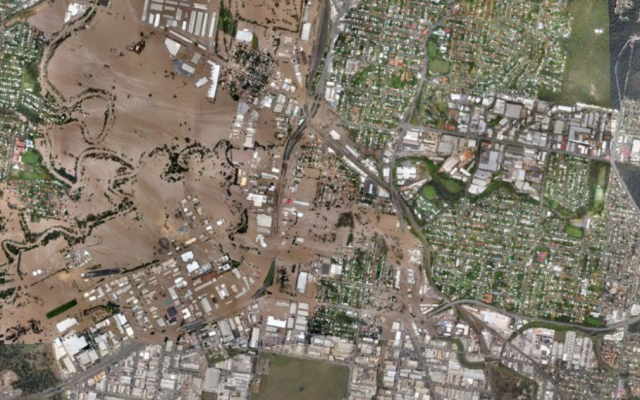My family and I were one of the volunteers turned away on Saturday (January 15 2011) as there were too many volunteers. We then went to the neighboring suburb of Rocklea, one of the worst hit, but even there there were too many volunteers. I helped remove some carpet and then left, as most people had already moved large quantities of bedding, carpets and drywall (Gyprock, plasterboard) onto the footpath. Within a day some of this had been collected by a huge convoy of (volunteer) trucks, loaded by front end loaders of various types. The queues to dump it stretch for a km or so at each major refuse station.
The focus today (Monday, January 17 2011) is on getting the rest of the stuff cleared from the footpaths and the last thing that is wanted is volunteers and their cars blocking the streets. I was always wary with heavy machinery on mine sites and heavy industry, and I suspect the risk of injury and death to be very real mixing people with machines in suburbia. Already with the streets cleared, roads leaned of mud, the exteriors of houses pressure washed of the “Plimsoll Line“ of the flood and the vegetation washed by a shower of rain, some houses are beginning to look like nothing happened from outside. Inside the picture is very different
Here is a picture of the area where I live from Nearmap, taken just after the flood peak in Brisbane, at 2cm resolution.
In Rocklea, the characteristic post-flood smell was strong, even after 2 days, indicating that a host of microbiological processes were at work. There is quite a good overview of these processes in the Mold growth, assessment, and remediation Wiki.
Many of the houses in Brisbane have a brick or wooden board outer construction, with drywall walls and ceilings. With flooding, fungal (and bacterial) problems are inevitable within a couple of days, particularly with the warm weather during and after the flood. Removal of carpets, drywall walsand ceilinsg and anything else covering cavities is essential. There is some risk to the workers, so a high level of respiratory protection is required, particularly when fungal spores and mycotoxins are being produced. However, to get an adequate respiratory protection, a good fit of a toxic dust face mask (P2 in Australia is needed, N95 in the US). As the work is hot and laborious, one with an exhaust valve is recommended. Poor fitting or the wrong type (eg surgical masks) will give little protection. My experience is that it is very difficult to get a protection factor of 10, even with careful fitting.
At the minimum, the cavities should be left to dry out, but that just reduces the spread of the fungi. Fans circulating the air (hard when there is no power) and open windows help. Ideally the fungal spores, mycotoxins and other fungal proteins should get killed or denatured. Bleach (a cup in a bucket of water) is the traditional approach, but it appears vinegar (4:1 with watre) is better. A huge amount would be neeed for a whole house if sponged or sprayed on. Other dry fumigation methods are available, but I don’t know of their availability in Australia. Once the cavities are properly treated, it would be safe to re-sheet walls and ceilings and refurnish the house. If this is not done, then there is a real risk of long term microbiological problems, particularly if there is some source of damp.
The US Centers for Disease Control and Prevention has some good advice to get rid of mould after a flood
- After a flood, mold will grow in your house. It can make you sick. You will need to clean your house.
- Take things that were wet for 2 or more days outside
- Things that stayed wet for 2 days have mold growing on them even if you can’t see it.
- Take out stuff made of cloth, unless you can wash them in hot water. Also take out stuff that can’t be cleaned easily (like leather, paper, wood, and carpet).
- Use bleach to clean mold off hard things (like floors, stoves, sinks, certain toys, countertops, flatware, plates, and tools).
- Never mix bleach with ammonia or other cleaners.
- Wear rubber boots, rubber gloves, goggles, and N-95 (P2) mask
- Open windows and doors to get fresh air when you use bleach.
- Mix no more than 1 cup of bleach in 1 gallon of water.
- Wash the item with the bleach and water mixture.
- If the surface of the item is rough, scrub the surface with a stiff brush.Rinse the item with clean water. Dry the item or leave it out to dry
It will be interesting to see whether the bared cavities and flooring gets properly treated before covering with new drywall and carpet. A lot of smells, headaches, respiratory problems and unwellness may result in poorly re mediated houses.
I’m looking at the relative efficiencies of bleach, vinegar and other chemcials like tea tree oil for another post.

